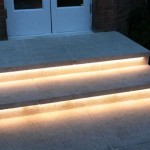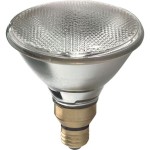Outdoor Solar Light Battery Replacement: A Comprehensive Guide
Outdoor solar lights are a popular and sustainable way to illuminate pathways, gardens, and other outdoor spaces. They harness the power of the sun to provide light at night, offering a cost-effective and environmentally friendly alternative to traditional electric lights. However, like any battery-powered device, outdoor solar lights require periodic battery replacement to maintain their functionality. This article will provide a comprehensive guide to understanding and performing outdoor solar light battery replacement, ensuring your lights continue to brighten your evenings.
Understanding Battery Types and Lifespans
Outdoor solar lights typically utilize rechargeable batteries, most commonly nickel-metal hydride (NiMH) or lithium-ion (Li-ion) batteries. NiMH batteries offer a good balance of cost and performance, while Li-ion batteries boast higher energy density and longer lifespans. The type of battery used will determine its capacity and lifespan, influencing how frequently you need to replace it.
The lifespan of a solar light battery depends on several factors, including the quality of the battery, environmental conditions, and usage patterns. In ideal conditions, a good quality NiMH battery can last for 2-3 years, while a Li-ion battery may last for 3-5 years. However, exposure to extreme temperatures, frequent charging and discharging, and improper storage can shorten battery lifespan.
Identifying Battery Replacement Needs
Several indicators suggest it's time to replace the batteries in your outdoor solar lights. The most obvious sign is a noticeable decrease in light output. If your lights are barely illuminating at night, it's a strong indication that the batteries are nearing the end of their life. Another indicator is the duration of the light output. If your lights are switching off earlier than usual, particularly during the summer months when there is ample sunlight for charging, the batteries may be losing their capacity.
Additionally, you can check the battery compartment for signs of corrosion or leakage. If you notice any signs of damage, it's time to replace the batteries to prevent potential damage to the lights. Regularly inspecting your solar lights is essential for early detection of battery issues and timely replacement.
Replacing the Batteries: A Step-by-Step Guide
Replacing the batteries in your outdoor solar lights is a relatively simple process. Here's a step-by-step guide:
- Locate the Battery Compartment: Most outdoor solar lights have a clearly marked battery compartment, often secured by a screw or latch. Locate the compartment and carefully open it.
- Remove the Old Batteries: Remove the old batteries from the compartment. Note the orientation of the batteries, as they may have a positive (+) and negative (-) terminal. It's crucial to insert the new batteries in the same orientation.
- Dispose of Old Batteries Properly: Batteries should be disposed of responsibly. Check your local regulations for proper recycling procedures and disposal guidelines.
- Insert New Batteries: Insert the new batteries into the battery compartment, ensuring they are correctly aligned with the positive (+) and negative (-) terminals. Most solar light batteries have markings to indicate correct placement.
- Secure the Compartment: Close the battery compartment securely, ensuring it is properly sealed to prevent moisture ingress. If necessary, tighten the screws or latch.
- Charge the New Batteries: Place the solar light in a location with direct sunlight to charge the new batteries. Allow the lights to charge for a full day before testing their functionality.
Choosing the Right Batteries
When choosing replacement batteries for your outdoor solar lights, it's crucial to select batteries that are compatible with your specific light model. Refer to the user manual or the information printed on the light fixture to determine the correct battery type, size, and voltage. It's also a good idea to opt for high-quality batteries from reputable brands to ensure optimal performance and longevity.
Maintaining Your Solar Lights
To extend the lifespan of your outdoor solar lights and their batteries, it's essential to follow a few maintenance tips:
- Clean the Solar Panels: Regularly clean the solar panels with a damp cloth to remove dust, dirt, leaves, or bird droppings that can obstruct sunlight absorption.
- Store Batteries Properly: When not in use, store the batteries in a cool, dry place, typically at room temperature. Avoid exposing them to extreme temperatures or moisture.
- Check Wiring Connections: Periodically inspect the wiring connections between the solar panel, battery compartment, and light fixture for any signs of damage or loose connections.
By following these simple tips, you can ensure that your outdoor solar lights continue to provide reliable illumination for your outdoor spaces while maximizing the lifespan of their batteries.

Top Tips For Your Garden Solar Light Batteries Buy A Battery

6 Steps To Replace Solar Light Batteries

Replacement Batteries For Outdoor Solar Lights Remy Battery

Replacement Batteries For Outdoor Solar Lights Remy Battery

Solar Lights Change Batteries Dollar Tree

Do Solar Garden Lights Need Batteries Outdoorlights The

Kastar 3 Pack Battery Replacement For Solar Outdoor Garden Art Light 1 3aaa 150nm Nt Nickel Metal Hydride Gp 17aaah Gp17aaah Sanyo N 50aaa 170nm Wacom Ack40303 Com

Alpine Corporation Aaa Ni Cd Replacement Rechargeable Batteries For Solar Powered Garden Lights Set Of 4 Sla388 The Home Depot

4 Pieces Replacement Solar Lights With Led Bulbs Top Panel Lantern Cover For Outdoor Hanging Garden Fruugo Tr

1 2 3 4 5x Selections Replacement Garden Lawn Solar Battery Boxes Led Light Lamp
Related Posts







